Solid-state Lasers
Acronym: SSL
Definition: lasers based on solid-state gain media (usually ion-doped crystals or glasses)
More general terms: lasers
More specific terms: doped insulator lasers, all-solid-state lasers, bulk lasers, fiber lasers, semiconductor lasers
German: Festkörperlaser
How to cite the article; suggest additional literature
Author: Dr. Rüdiger Paschotta
Solid-state lasers are lasers based on solid-state gain media such as crystals or glasses doped with rare earth or transition metal ions, or semiconductor lasers. (Although semiconductor lasers are of course also solid-state devices, they are often not included in the term solid-state lasers.) Ion-doped solid-state lasers (also sometimes called doped insulator lasers) can be made in the form of bulk lasers, fiber lasers, or other types of waveguide lasers. Solid-state lasers may generate output powers between a few milliwatts and (in high-power versions) many kilowatts.
The first solid-state laser – and in fact the first of all lasers – was a pulsed ruby laser, demonstrated by Maiman in 1960 [1]. Later on, however, other solid-state gain media were preferred because of their superior performance. A major problem with ruby is its three-level nature.
Optical Pumping and Energy Storage
Many solid-state lasers are optically pumped with flash lamps or arc lamps. Such pump sources are relatively cheap and can provide very high powers. However, they lead to a fairly low power efficiency, moderate lifetime, and strong thermal effects such as thermal lensing in the gain medium. For such reasons, laser diodes are very often used for pumping solid-state lasers. Such diode-pumped solid-state lasers (DPSS lasers, also called all-solid-state lasers) have many advantages, in particular a compact setup, long lifetime, and often very good beam quality. Therefore, their share of the market is rapidly rising.
The laser transitions of rare-earth or transition-metal-doped crystals or glasses are normally weakly allowed transitions, i.e., transitions with very low oscillator strength, which leads to long radiative upper-state lifetimes and consequently to good energy storage, with upper-state lifetimes of microseconds to milliseconds. For example, a laser crystal pumped with 10 W of power and having an upper-state lifetime of 1 ms can store an energy of the order of 10 mJ. Although energy storage is beneficial for nanosecond pulse generation (see below), it can also lead to unwanted spiking phenomena in continuous-wave lasers, e.g. when the pump source is switched on.


Pulse Generation
The long upper-state lifetimes makes solid-state lasers very suitable for Q switching: the laser crystal can easily store an amount of energy which, when released in the form of a nanosecond pulse, leads to a peak power which is orders of magnitude above the achievable average power. Bulk lasers can thus easily achieve millijoule pulse energies and megawatt peak powers.
In mode-locked operation, solid-state lasers can generate ultrashort pulses with durations measured in picoseconds or femtoseconds (minimum: ≈ 5 fs, achieved with Ti:sapphire lasers). With passive mode locking, they have a tendency for Q-switching instabilities, if these are not suppressed with suitable measures.
Wavelength Tuning
In terms of their potential for wavelength tuning, different types of solid-state lasers differ considerably. Most rare-earth-doped laser crystals, such as Nd:YAG and Nd:YVO4, have a fairly small gain bandwidth of the order of 1 nm or less, so that tuning is possible only within a rather limited range. On the other hand, tuning ranges of tens of nanometers and more are possible with rare-earth-doped glasses, and particularly with transition-metal-doped crystals such as Ti:sapphire, Cr:LiSAF and Cr:ZnSe (→ vibronic lasers).
Types of Solid-state Lasers
Examples of different types of solid-state lasers are:
- Small diode-pumped Nd:YAG (→ YAG lasers) or Nd:YVO4 lasers (→ vanadate lasers) often operate with output powers between a few milliwatts (for miniature setups) and a few watts. Q-switched versions generate pulses with durations of a few nanoseconds, microjoule pulse energies and peak powers of many kilowatts. Intracavity frequency doubling can be used for green output.
- Single-frequency operation, typically achieved with unidirectional ring lasers (e.g. NPROs = nonplanar ring oscillators) or microchip lasers, allows for operation with very small linewidth in the lower kilohertz region.
- Larger lasers in side-pumped or end-pumped configurations (see above), having the geometry of rod lasers, slab lasers or thin-disk lasers, are suitable for output powers up to several kilowatts. Particularly thin-disk lasers can still offer very high beam quality, and also a high power efficiency.
- Q-switched Nd:YAG lasers are still widely used in lamp-pumped versions. Pulsed pumping allows for high pulse energies, whereas the average output powers are often moderate (e.g. a few watts). The cost of such lamp-pumped lasers is lower than for diode-pumped versions with similar output powers.
- Fiber lasers are a special kind of solid-state lasers, with a high potential for high average output power, high power efficiency, high beam quality, and broad wavelength tunability. See also the articles on fiber lasers versus bulk lasers and on high-power fiber lasers and amplifiers.
Suppliers
The RP Photonics Buyer's Guide contains 133 suppliers for solid-state lasers. Among them:

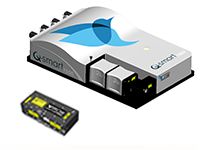
Lumibird
Lumibird nanosecond Q-switched Nd:YAG lasers are well known for their ruggeness and versatility. From 5 mJ to 1.5 J at 1064 nm, from single pulse to 400 Hz, they can be diode-pumped (compactness, ease of use) or flashlamp-pumped (high energy), and are available at 532 nm, 355 nm, 266 nm and 1.5 µm. Double pulse models are also proposed for applications in fluid mechanics (PIV).
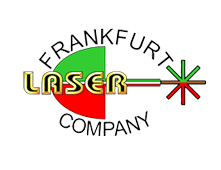
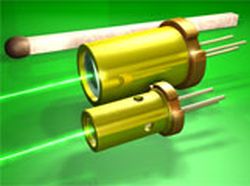
Frankfurt Laser Company
Frankfurt Laser Company offers a wide range of diode-pumped solid state laser products, including the smallest DPSS laser heads, low cost modules, low power and high power laser systems and high quality single longitudinal mode laser systems with different power output and wavelengths.

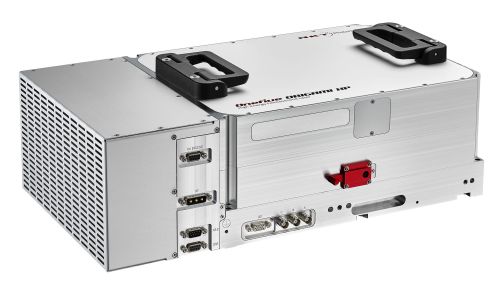
NKT Photonics
NKT Photonics offers a wide range of diode-pumped solid-state industrial ultrafast fiber lasers as well as scientific ultrafast fiber lasers. All lasers are maintenance-free and packaged in a dust-sealed enclosure allowing for operation in the harshest environments. The combination of advanced fiber laser technology and nonlinear frequency conversion results in a broad range of wavelengths, from UV to infrared, and pulse durations from femtosecond to nanosecond.

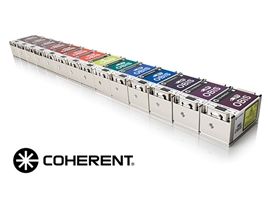
Edmund Optics
Edmund Optics offers a wide range of diode laser sources, including machine vision lasers, life science lasers, metrology lasers, industrial and point lasers, and material processing lasers.


EKSPLA
EKSPLA offers a wide range of femtosecond, picosecond and nanosecond lasers as well as tunable wavelength systems for research and industrial applications.

RPMC Lasers
RPMC Lasers offers one of the widest selections of pulsed and CW diode-pumped solid-state lasers ranging from the UV through the IR. Our solid-state laser offering includes CW and Pulsed DPSS Lasers, CW and pulsed fiber lasers, and microchip lasers with a wide range of powers, pulse widths, and pulse repletion rates.


Teem Photonics
Lasers from Teem Photonics are all air-cooled diode-pumped solid-state lasers, which are passively Q-switched to generate sub-nanosecond pulses, and in some cases combined with a fiber amplifier. Due to nonlinear frequency converters, available emission wavelengths are 1535 nm, 1064 nm, 532 nm, 355 nm, 266 nm and 213 nm.

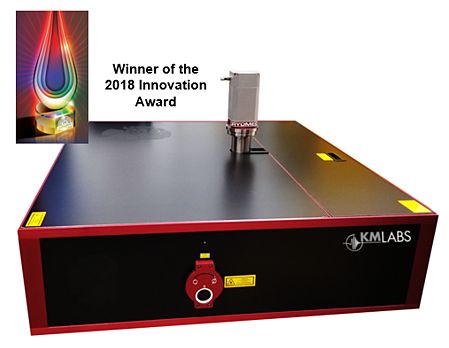
Kapteyn-Murnane Laboratories
The RAEA™ Ti:sapphire amplifier builds on KMLabs’ 20-year tradition of leadership in ultrafast science, bringing the unmatched flexibility of previous amplifier systems into a single, hands-free platform. Engineered for high harmonic generation (HHG): now you can stop worrying about the pump. Beyond serving the multitude of applications for which Ti:sapphire lasers have become ubiquitous, RAEA is especially designed as an unparalleled source for producing short wavelength light via high harmonic generation. The award-winning RAEA has been engineered for the most challenging applications rather than the most common, and was specifically designed with the XUUS system in mind for high harmonic generation. From better beam quality and stability, to remote alignment and lower maintenance needs, RAEA serves as a repeatable and reliable source for any of your high harmonic generation needs.
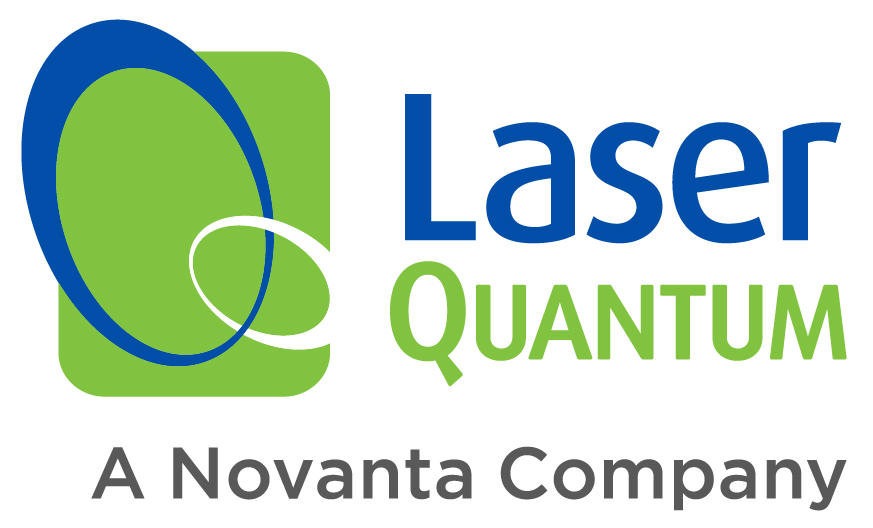

Laser Quantum
Laser Quantum manufactures a wide range of diode-pumped solid-state lasers with wavelengths and powers from 473 to 1064 nm, 25 mW to 16 W. Laser Quantum guarantee exceptional reliability, compact size and long lifetimes, suitable for a large variety of applications.
Questions and Comments from Users
Here you can submit questions and comments. As far as they get accepted by the author, they will appear above this paragraph together with the author’s answer. The author will decide on acceptance based on certain criteria. Essentially, the issue must be of sufficiently broad interest.
Please do not enter personal data here; we would otherwise delete it soon. (See also our privacy declaration.) If you wish to receive personal feedback or consultancy from the author, please contact him e.g. via e-mail.
By submitting the information, you give your consent to the potential publication of your inputs on our website according to our rules. (If you later retract your consent, we will delete those inputs.) As your inputs are first reviewed by the author, they may be published with some delay.
Bibliography
| [1] | T. H. Maiman, “Stimulated optical radiation in ruby”, Nature 187, 493 (1960) (first experimental demonstration of a laser), doi:10.1038/187493a0 |
| [2] | R. L. Byer, “Diode laser-pumped solid-state lasers”, Science 239, 742 (1988), doi:10.1126/science.239.4841.742 |
| [3] | G. Huber, C. Kränkel, and K. Petermann, “Solid-state lasers: status and future”, J. Opt. Soc. Am. B 27 (11), B93 (2010), doi:10.1364/JOSAB.27.000B93 |
| [4] | D. C. Hanna and W. A. Clarkson, “A review of diode-pumped lasers”, in Advances in Lasers and Applications (eds. D. M. Finlayson and B. Sinclair), pp. 1–18, Taylor & Francis, New York(1999) |
| [5] | W. Koechner, Solid-State Laser Engineering, 6th edn., Springer, Berlin (2006) |
| [6] | A. Sennaroglu (ed.), Solid-State Lasers and Applications, CRC Press, Boca Raton, FL (2007) |
| [7] | R. Paschotta, Field Guide to Lasers, SPIE Press, Bellingham, WA (2007) |
| [8] | R. Paschotta, “Operation regimes of solid-state lasers”, chapter in Handbook of solid-state lasers: Materials, systems and applications, editors: B. Denker, and E. Shklovsky, Woodhead Publishing (2013), ISBN 0 85709 272 3 |
See also: doped insulator lasers, all-solid-state lasers, lasers, gain media, laser crystals, composite laser crystals, rare-earth-doped gain media, transition-metal-doped gain media, YAG lasers, laser crystals versus glasses, fiber lasers versus bulk lasers, diode-pumped lasers, lamp-pumped lasers, end pumping, side pumping, rod lasers, slab lasers, thin-disk lasers, ring lasers, nonplanar ring oscillators, semiconductor lasers, laser specifications
and other articles in the category lasers
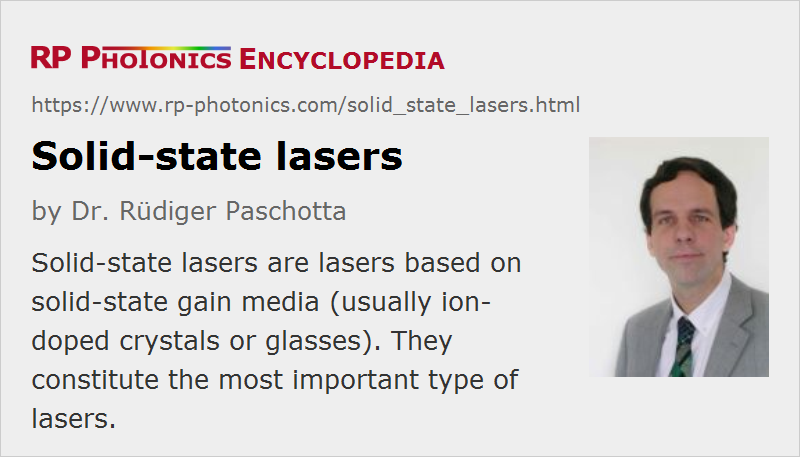 |




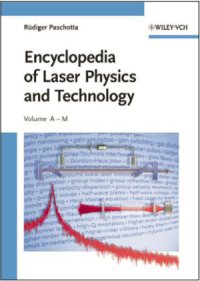
If you like this page, please share the link with your friends and colleagues, e.g. via social media:
These sharing buttons are implemented in a privacy-friendly way!